| At a Glance | |
|---|---|
| Product | Amazon Cloud Player Learn more |
| Summary | Cloud-based music player for Windows, MacOS and Android |
| Pros | • Very easy to use • Automatic file organization • Good support |
| Cons | • No Palm, Blackberry or iOS support • Files are not encrypted • Amazon can access your files |
Amazon recently unveiled its Cloud Drive service that offers 5GB of free cloud storage to anyone who chooses to use it. This 5GB of free storage can turn into 20GB if one chooses to buy a single MP3 album through Amazon’s music store.
So what’s the big deal about getting a mere 5GB of free storage? For starters, this option allows for the storage, management, and playing of MP3 files. Take one service without the other and it does not sound so exciting. But when coupled together, they allow for free music access through several internet connected devices anywhere, at any time.
So how exactly does this work? The answer is the Amazon Cloud Player. Cloud Player is an application (actually, three applications) for playback of music files stored on your Cloud Drive. Intuitive, with a straightforward design, one can easily navigate, create playlists, upload and stream music.
The home screen shown above is uncrowded and presents a very simple, user-friendly interface. When uploading music files, Amazon employs the help of its MP3 Loader application. This will be installed on the computer that is being used to upload music files and can be obtained by clicking on the Upload to your Cloud Drive button at the top right of the screen. MP3 Loader uses Adobe Air, which automatically installs itself once the program is accessed.
Running the installer on my Windows system took less than two minutes. Once the program is opened, it searches for local music files and asks if the user would like these files uploaded to the cloud. This list can be broken down so that only selected files can be transferred. Other useful information includes the total file size, estimated time of an upload, the total size of cloud storage left and, of course, a Buy more storage option.
Once the desired files have been selected, a quick click starts the file transfer. All uploads are automatically categorized into songs, albums and genres, so organization, at least in some form, is done for you. If a song is purchased through Amazon, there is an option to have it saved directly to your cloud storage, making it automatically available in Cloud Player. Once again, this process is very simple and should not pose any problems for most computer users.
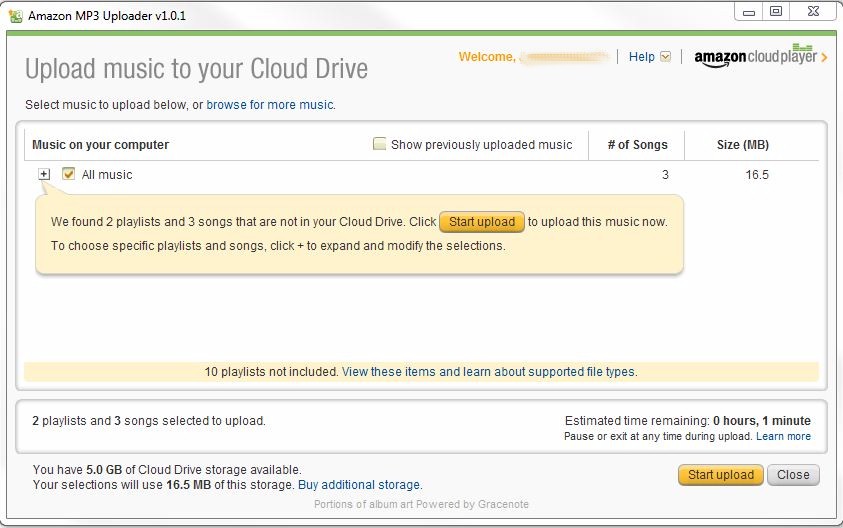
Clicking on Upload to your Cloud Drive allows Cloud Player to find music on your computer automatically.
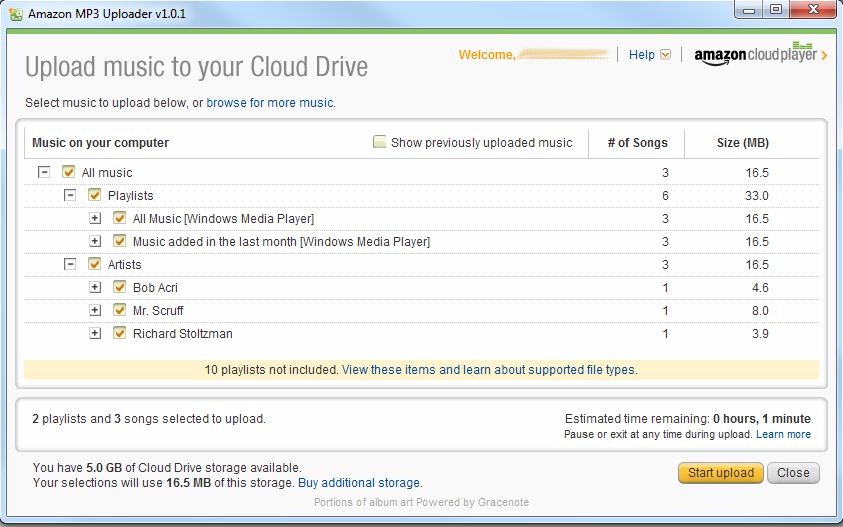
It is easy to see what music and playlists are available for upload
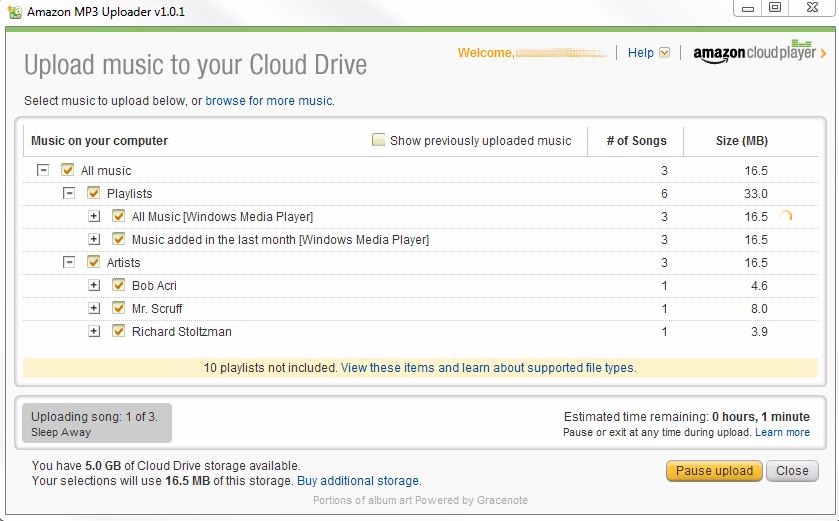
Clicking on upload transfers the selected items to your cloud drive. The progress bar shows song number, file size and estimated time for the upload to complete
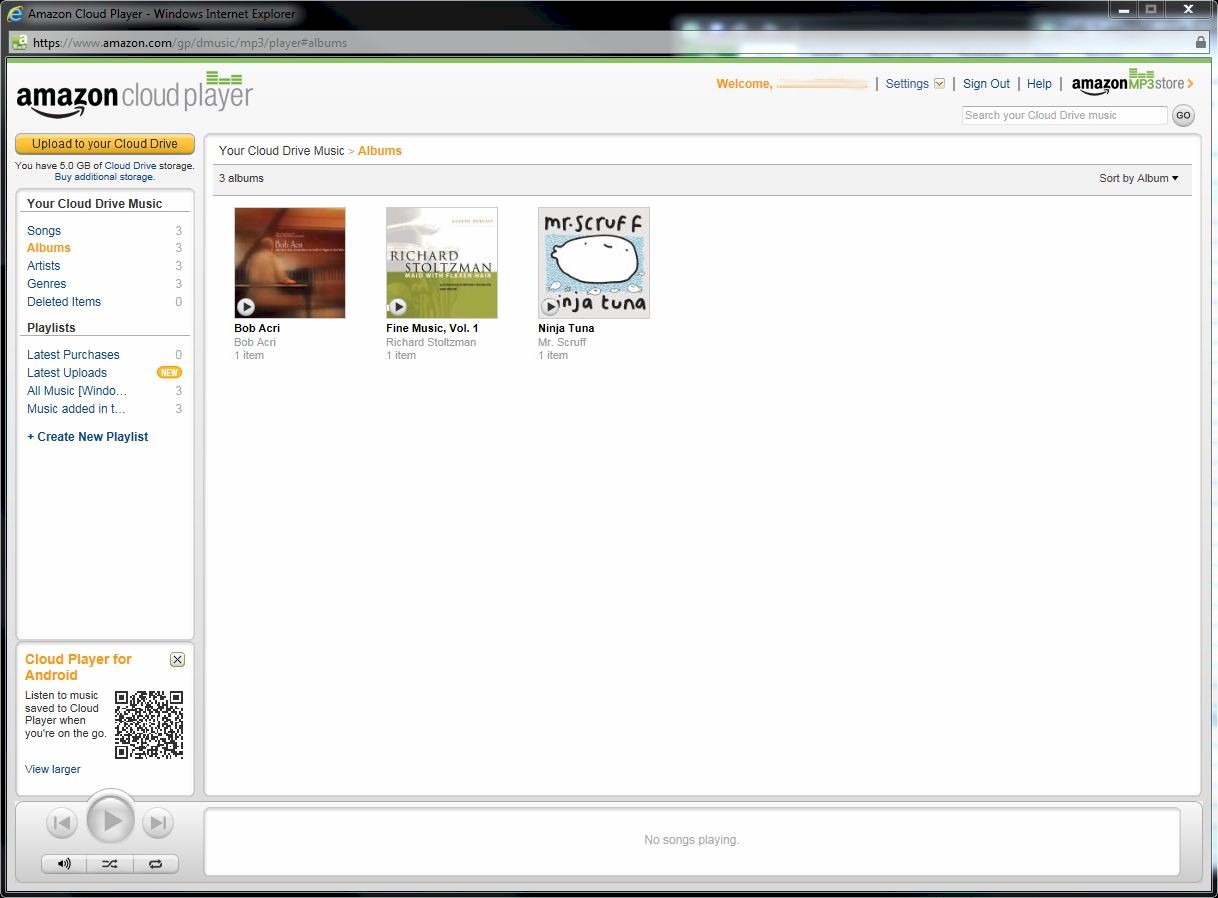
Navigation categories include songs, albums and artists
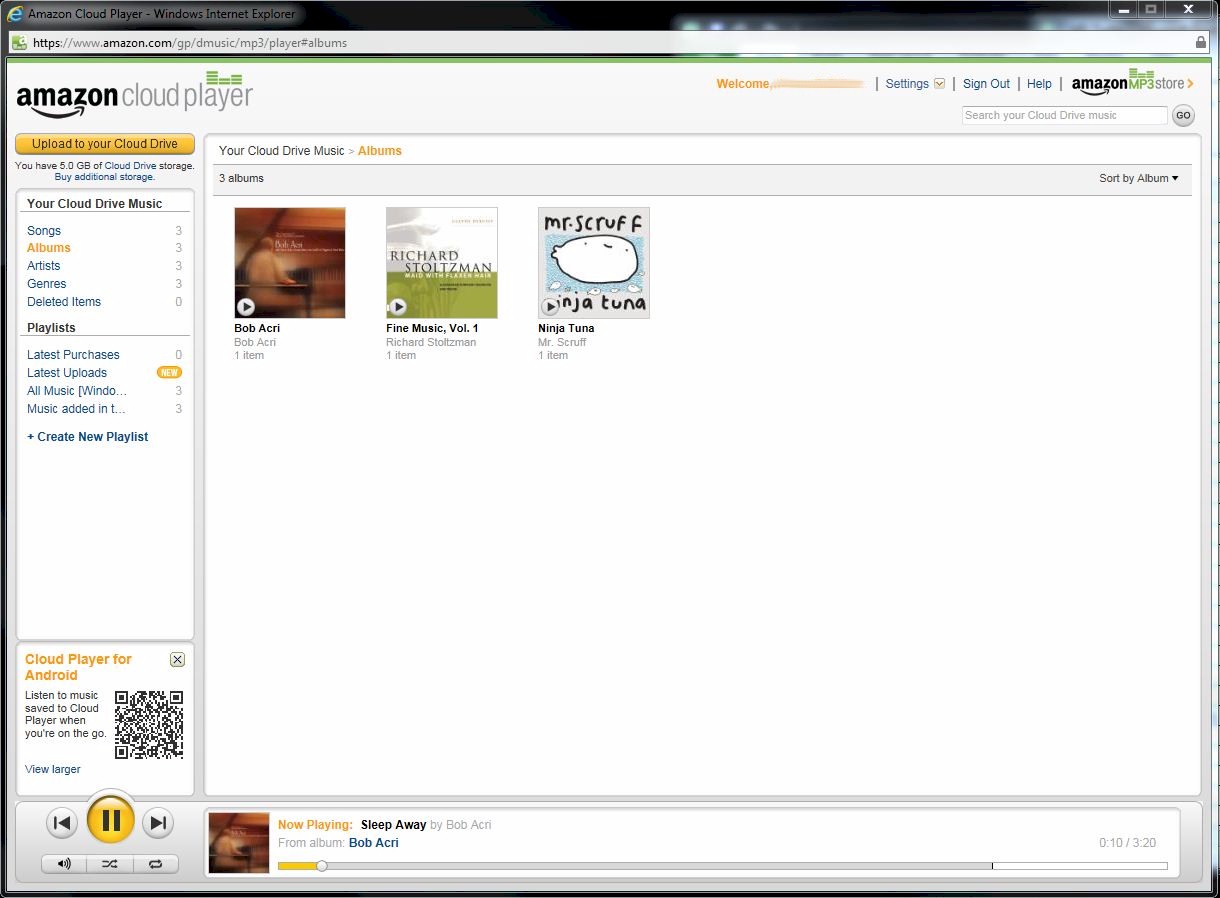
Clicking on the picture plays the song, playback information is shown at the bottom of the screen
Supported Devices
Free storage and an easy to navigate interface is great, but which devices can you use to access your music in the Cloud? It turns out that this is one of the strengths of Cloud Player. By being available over multiple platforms, Cloud Player offers some versatility over the competition.
Internet Explorer 8, Firefox, Chrome and Safari all support Cloud Player, making this a Windows and MacOS friendly application. Unfortunately, Blackberry and Palm based smart phones do not support the use of a Cloud player app, although they do support Amazon’s MP3 store app.
The web-based Cloud Player is not optimized to run on mobile phones, so you will need to access the program via an app which is currently only available for Android phones.
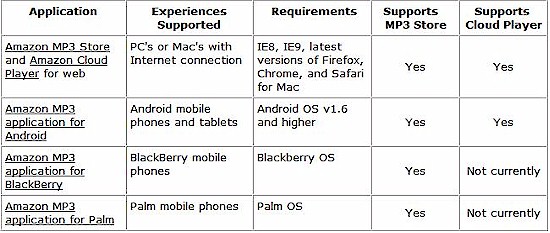
Support
While navigating the MP3 Store and Cloud Player help on Amazon.com, most of the expected issues a user may encounter seem to be addressed. There is always the option of contacting support via email or phone for any advanced troubleshooting needs. Cloud player supports MP3 (.mp3) or AAC (.m4a) files (iTunes non-DRM files). But lossless AAC files are not supported, according to the website.
Security
If you choose to store data other than music on your Cloud Drive, security can become a primary concern. Amazon does not encrypt your files. Additionally, there is a clause in the user agreement that allows the company to access your data at any time they deem feasible. This clause is as follows:
5.2.Our Right to Access Your Files. You give us the right to access, retain, use and disclose your account information and Your Files: to provide you with technical support and address technical issues; to investigate compliance with the terms of this Agreement, enforce the terms of this Agreement and protect the Service and its users from fraud or security threats; or as we determine is necessary to provide the Service or comply with applicable law.”
If you are using this service for Cloud Player and music access, security concerns may be a moot point. If you choose to add additional private data to your storage, be aware of the stipulations and lack of encryption.
Conclusion
Overall, I was very pleased at the user friendly interface and cross-platform accessibility. For the average or casual computer user, the combination of Cloud Drive and Cloud Player is a very nice option. For those that are looking for advanced features or a secure storage solution, this may leave something to be desired.
If it’s a streamlined, portable music solution you’re looking for, Cloud Player is definitely worth a look.
